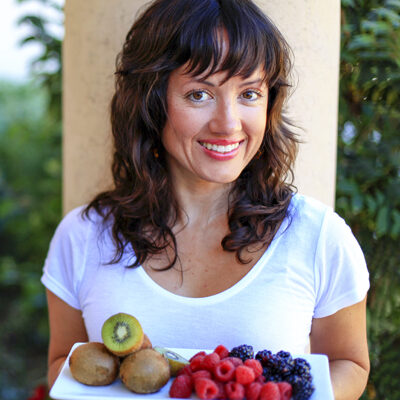Guest Post: Grow Sprouts in Four Simple Steps
Don’t worry I don’t mean those flavourless balls of mush that you have to force down at family dinners (not that I have anything against Brussel’s sprouts in themselves). I mean seed sprouts, which are amongst the most nutritious, easy-to-grow foods in the world.
In fact, if you were so inclined you could quite happily grow dozens of uncommon vegetables in the upcoming weeks, without ever stepping outside the kitchen. Wheat, oats, quinoa, peanuts, pinto beans…all plants with seeds that, given the right conditions, will develop into scrumptious sprouts. And the joy is that the process couldn’t be simpler. All you need is a jar, cheesecloth, and seeds…
How to Grow
A “sprout” is a plant in its very earliest stage of growth, which it achieves by using only water and the energy contained within the coat of its seed. Germination is usually said to be complete when the first embryonic root, called the radicle, appears.

This is followed by the “seedling” stage and we harvest sprouts at the beginning of this period, when the first set of leaves, called the “cotyledons”, have appeared. If they had been allowed to germinate in soil, they would develop into full plants. For us, it’s moisture that triggers germination.
Follow the instructions below to get started….
You’ll need: (1) a glass jar, (2) some cheesecloth or a dishcloth, (3) an elastic band, and (4) some sprouting seeds.
- Rinse your jar with hot water and soap.
- Add a tablespoon of seeds and fill it about halfway with cold water. Pop the cheesecloth on, securing it with your elastic band, and leave it in a spot with no direct sunlight for eight hours, or overnight.
- Drain the water through the cloth and rinse out the jar. Set it aside again (completely drained) and repeat this rinsing process every twelve hours or morning/night.
- When the sprouts are a few inches long, they’re ready to eat!
Are They Safe?
There’s been a fair bit of media attention around the supposed dangers of fresh sprouts, especially concerning the presence of Salmonella and E. Coli. Bacteria pathogens can contaminate seeds (well before they reach you in their packets). These pathogens are then given the perfect conditions to flourish in the sprouting jar.
The way to overcome this issue is to buy certified seeds (which are pathogen free) from reputable companies like The Sprouting People. Remember that the practice of growing sprouts is thousands of years old and, as long as you’re smart about where you buy from, there should never be a problem.
What to Grow
There are a myriad of healthful and tasteful options open to you. Below I’ve included some of the choices that I particularly like.

Garlic Chives: The seeds of garlic chives (a plant that, unsurprisingly, is of the same family as both garlic and purple-flowered chives) grow into wonderful garlicky sprouts. They take a little longer to mature (around two weeks) but are well worth the wait.
Broccoli: On a weight-by-weight basis, broccoli sprouts are fifty times more nutritious than their fully grown counterparts, which are pretty nutritious in and of themselves. Broccoli is a cool-weather crop, so rinse your jar three times a day instead of the usual two. They’ll be ready to harvest in around four days and taste pleasantly mild.
Daikon Radish: One of my all time favourites! They’re spicy, fast-growing and rather good for you.
Alfafa: A great beginner sprout, the flavour is mildly nutty.
Mung Beans: Sweet, crunchy, and ready in only 2 – 5 days, mung bean sprouts are widely used in Asian cuisine. They are the world’s most-consumed sprout.
Other seeds that are commonly used include onion, fenugreek, arugula (rocket), mustard and cress. Remember that sprouts often taste like the plant that they would grow up to be. You can always just pick your favourite vegetables and check if their seeds are suitable for sprouting.
What are your thoughts and experiences? Have you got a taste for sprouts or will you be sticking to fully grown veg? Leave a comment below.
 Bio of Author: Dan writes about urban gardening and container growing on his blog Urban Turnip. During the colder months, as a perfect antidote to winter blues, he turns his attention to growing stuff indoors.
Bio of Author: Dan writes about urban gardening and container growing on his blog Urban Turnip. During the colder months, as a perfect antidote to winter blues, he turns his attention to growing stuff indoors.
Posted in Wellness and tagged with grow sprouts in a jar, how to grow sprouts, indoor growing, sprouting seeds

About Me
Hi, I’m Christine, thanks for stopping by! As a fibromyalgia thriver (symptom-free for over 10 years now thanks to diet and lifestyle changes), it is my passion to share the healing power of food.
As an RN and Holistic Nutrition Practitioner, it is my desire to empower you to take charge of your life.
Let’s journey together to glowing health. Learn More
Your Health Transformation Starts Here!

Sign up to get FREE healthy lifestyle tips and recipes!